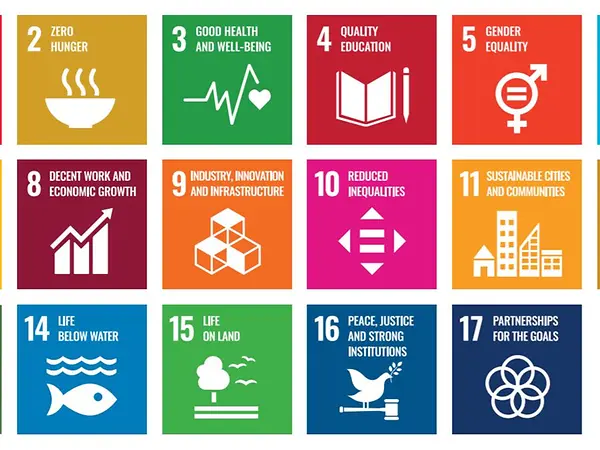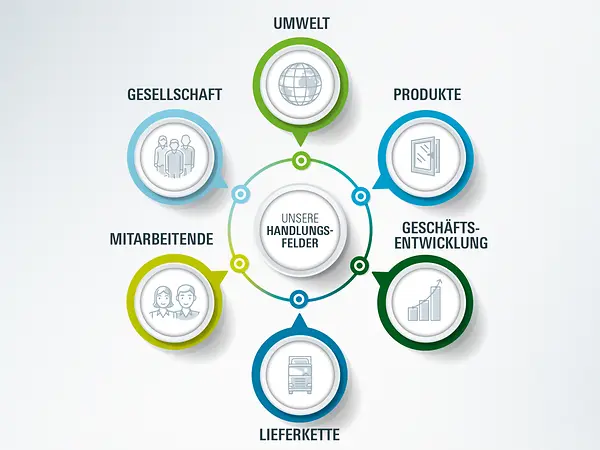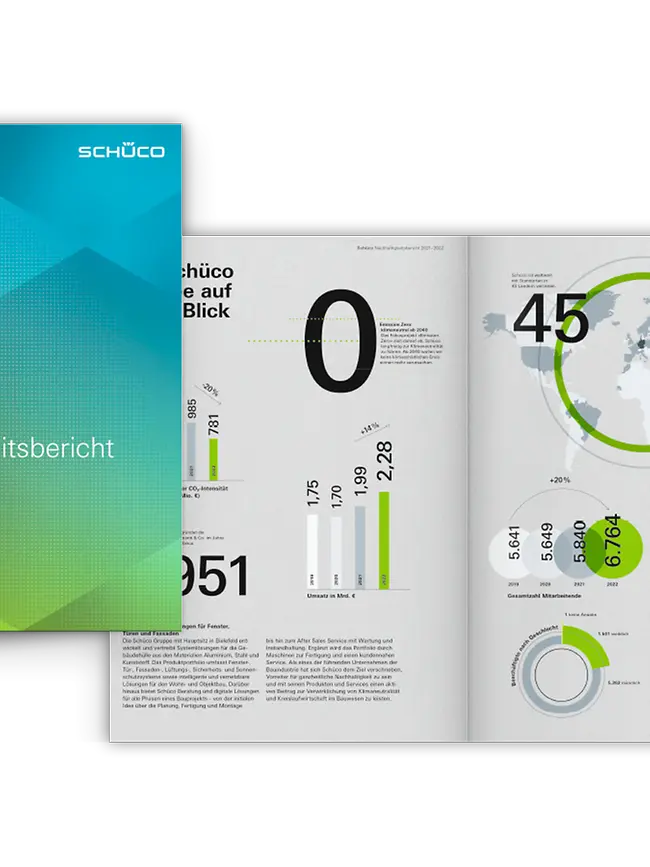Sustainability goes over and above climate and environmental protection; we see it as a challenge across the board. It is therefore our duty to act conscientiously in all areas, using what we have at our disposal. Sustainability is not an abstract idea, but a concrete item on the agenda that we are addressing every day through each of our six defined action areas of environment, products, business development, supply chain, employees and society. As we are unable to do everything all at once, we have defined six projects in addition to our action areas, which narrow down the Schüco sustainability focus points even further and which are currently our main focus. Here we have assigned each action area to one of these focus projects.










